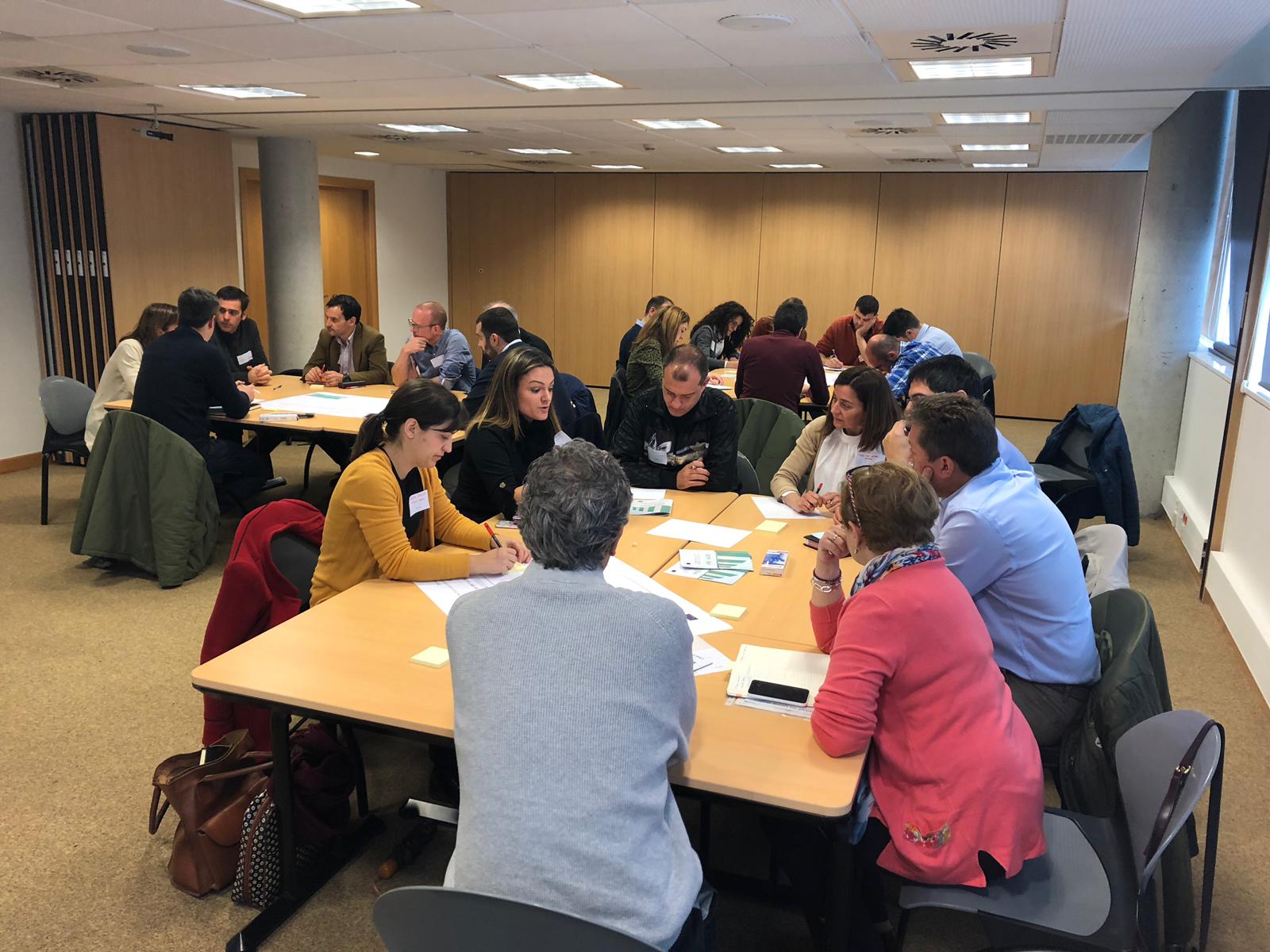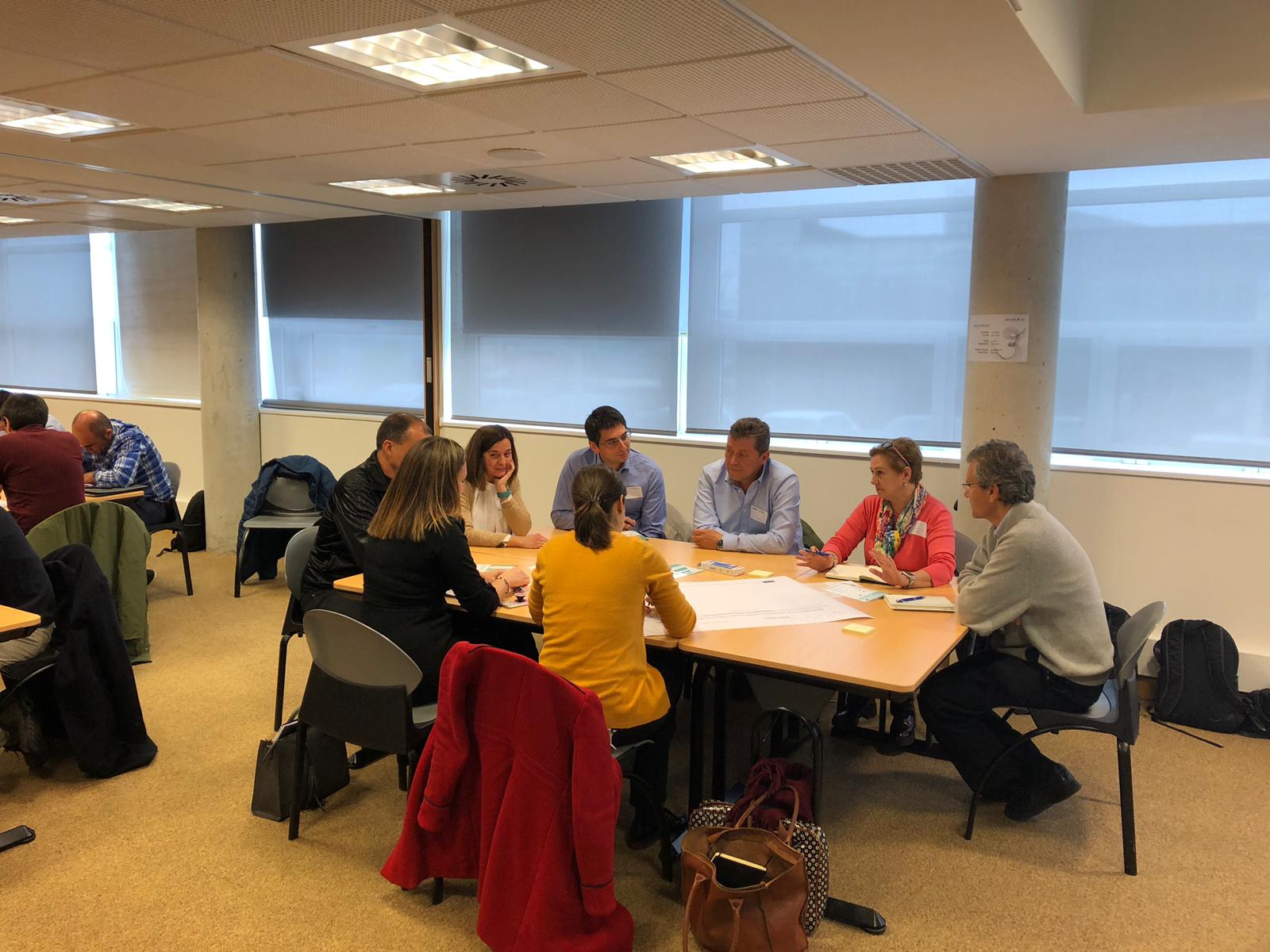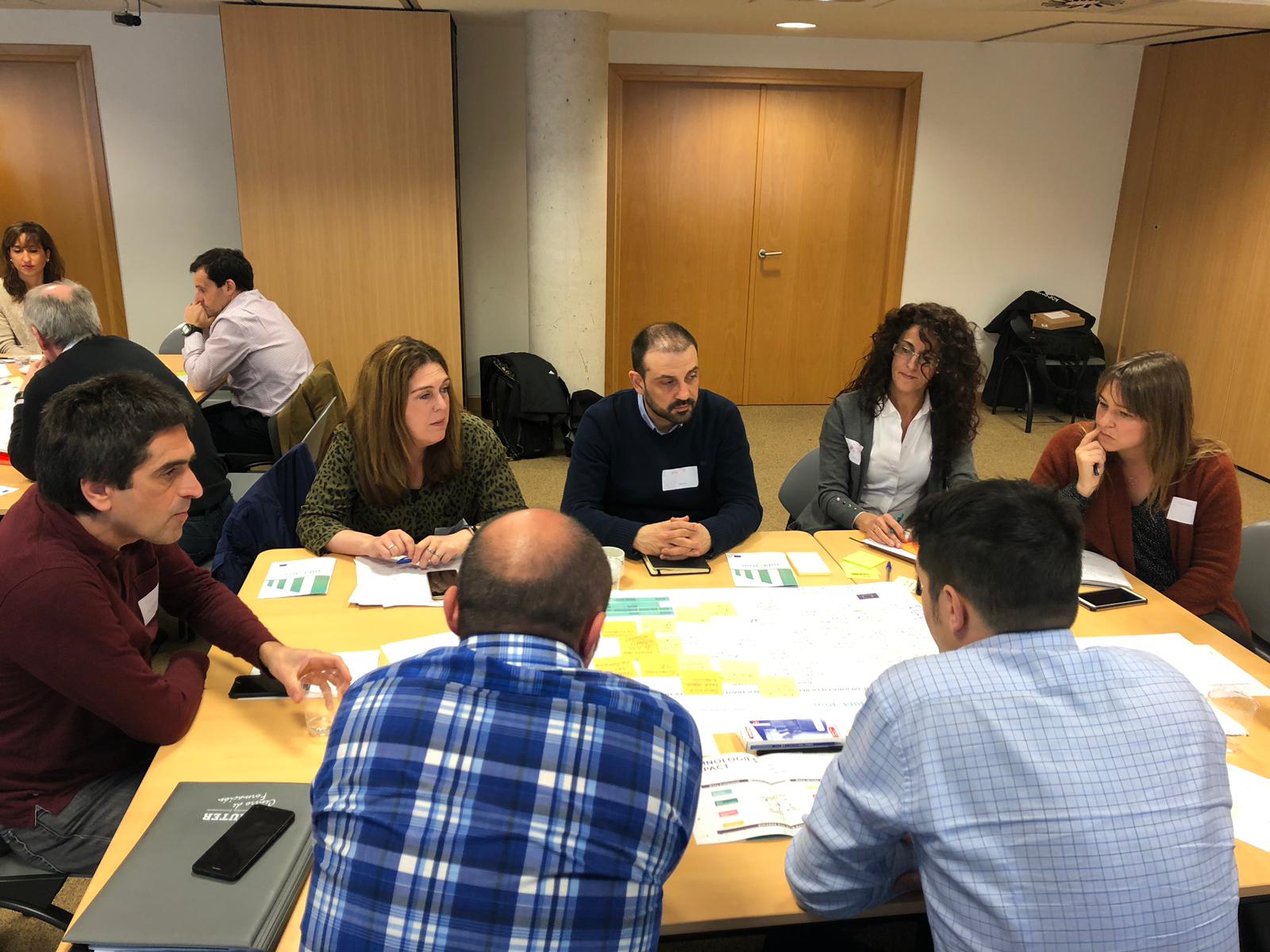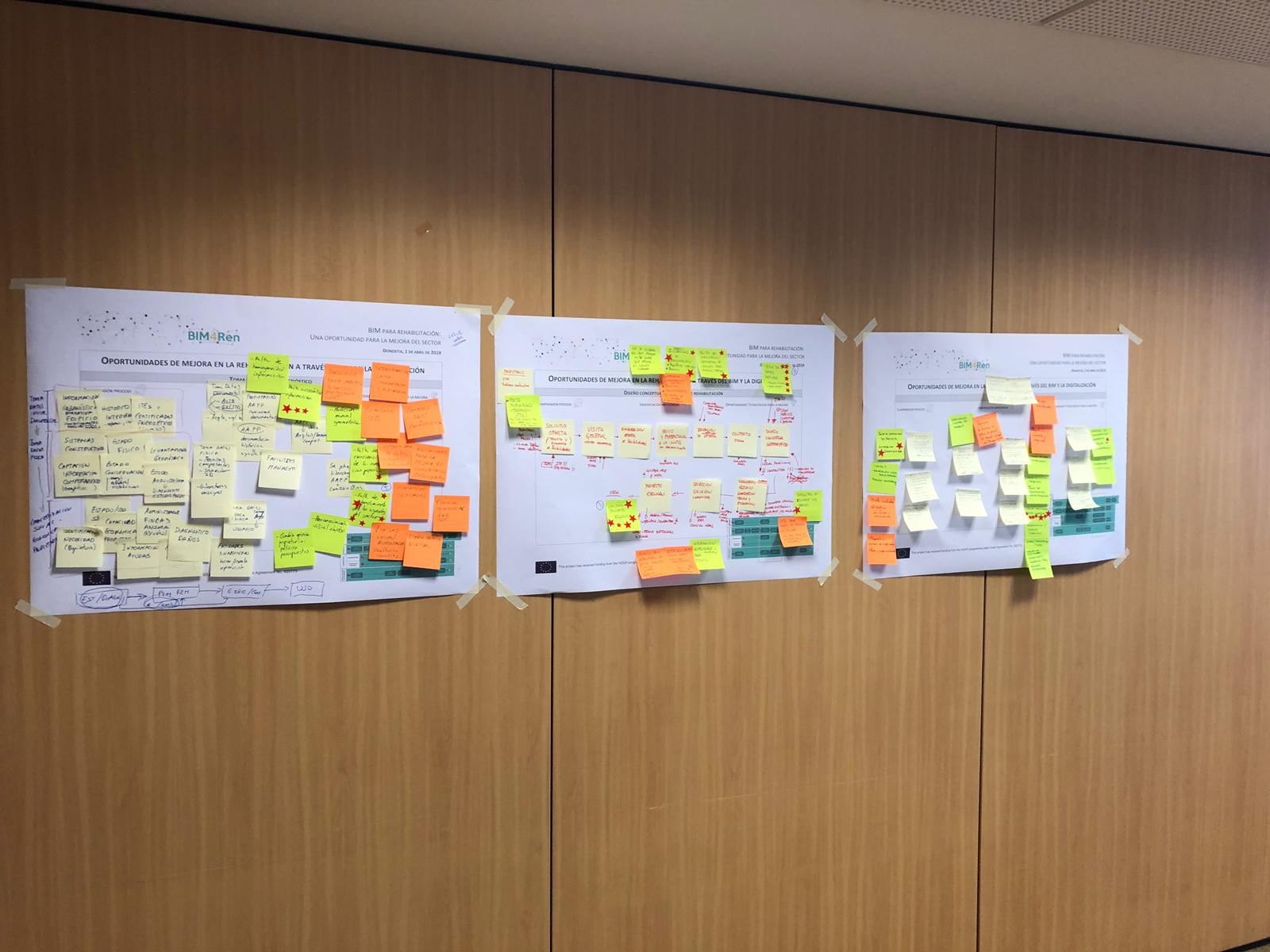The first Living Lab session in Spain was held in Donostia (San Sebastián) on April 1st with a workshop organized by TECNALIA with the collaboration of KURSAAL REHABILITACIONES. Twenty-four people attended the workshop from which thirteen where external stakeholders and four where BIM4Ren early-adopters.
The workshop was divided in two main parts: at the beggining the BIM4Ren project was presented and then an open discussion was organised to share experiences around potential improvements and identification of opportunities in renovation by means of BIM and digital technologies.
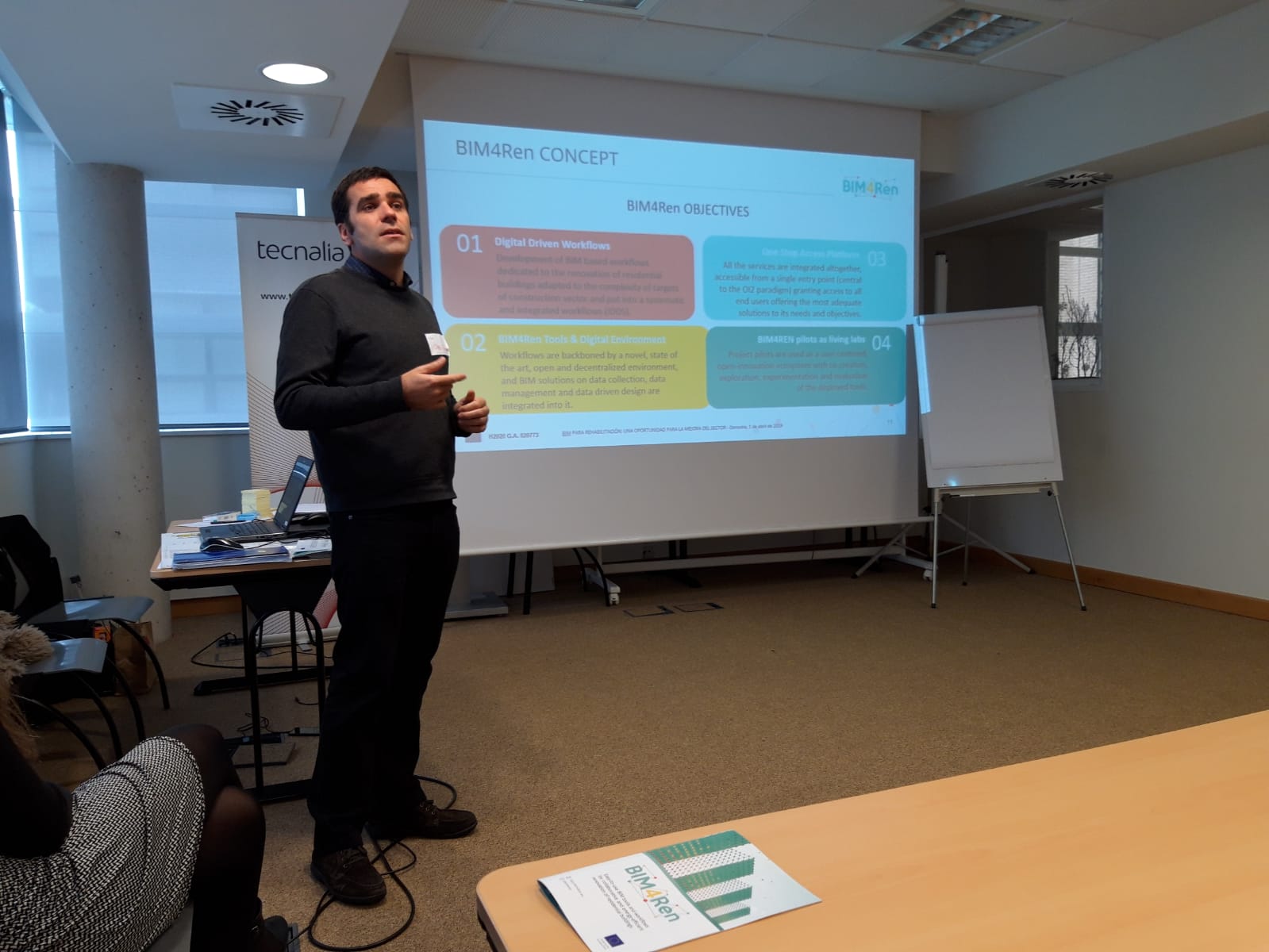
During the workshop, specific questions were asked to three smaller working groups. The first questions where to discuss main activities, actors and information that is exchanged during renovation works. Then, the identification of the main inefficiencies during the process mas made, concluding with a preliminary suggestion of potential solutions and technologies that could contribute to improve the overall efficiency.
As an overall conclusion the exercise has given the opportunity to discuss and understand the difficulties during the execution of many and different activities, where many agents intervene. Spanish construction stakeholders consider that BIM and other digital solutions are very beneficial to develop the works in a more efficient way.
When analyzing the inefficiencies identified in each subprocess, it can be observed that, mainly, they can be grouped in:
- those that arise because of the difficulties linked to the information necessary for the development of the different activities: it is not accessible, it is not homogeneous, it is not updated, it is not very detailed, etc.
- those that arise due to lack of communication and a good interrelation between the stakeholders involved in the rehabilitation process: lack of understanding among the agents of the sector, poor communication between agents, non-shared information, technicians and owner have few communications, etc.
- those that are related to economic issues: unexpected costs during the execution, difficulty to focus / specify prices, request of new budgets by the owners (changes of opinion), etc.
- and those related to issues with execution of the tasks themselves: ineffective data collection (erroneous measurement, lack of evidence), lack of supply of materials, lack of planning, difficult coordination of work times, etc.
For the spanish stakeholders, the inefficiencies considered to be of higher priority are those related to information and communication and interrelation of agents.
Spanish construction stakeholders consider that BIM and other digital solutions are very beneficial to develop the renovation works in a more efficient way.
Finally, the workshop identified the technologies and technological solutions that may help to address them:
- Sensory, IoT monitoring, 3D scanning, 360º cameras, computer vision, evolution of END technologies, digital building book (especially to improve data collection and diagnosis).
- Market price database tool (currently there is no database for energy renovation) > to facilitate pricing.
- Last Planner System, constructive model of the building (with costs and planning) > to improve the execution process of the work.
- Virtual Reality / Augmented Reality > to facilitate visualization to users / owners.
- Easily understandable BIM models (visual, management), digital communication platform, applications for the improvement of communication between stakeholders > applicable to the whole rehabilitation process to improve both the quality of the information and that it is accessible, such as communication and interrelation between agents.
Like the italian workshop organised at the BIM4Ren Venice pilot, this excercise served to highlight the importance of digitalisation in the construction sector and helps validate the BIM4Ren approach of developping easy-to-use digital tools for fast & efficient renovation.
And to finish things off, here is a quick video made by our partner KURSAAL to see a quick summary of the workshop (in spanish!).
This article is part of a series regarding the kick-off activities at our Living Labs. You can read the first article about the Italian workshop and it’s conclusions here and about the French Pilot Tech set-up here.
